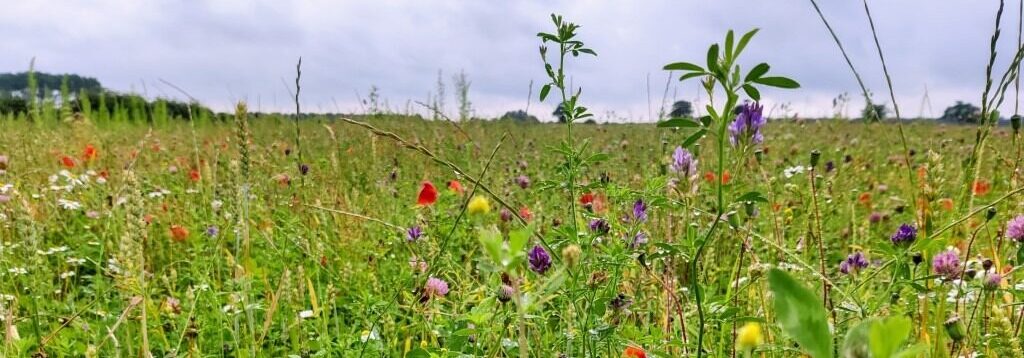
How we farm at Deepdale
Deepdale Farm is an arable farm growing combinable crops (that means, crops that can be harvested with a combine harvester). These include wheat, barley and beans – but we’re looking at new and interesting crops we can grow in the future. Being an arable farm we do not currently have livestock of our own, but we’re working on it – see ‘regenerative practices’ below.
Organic farming
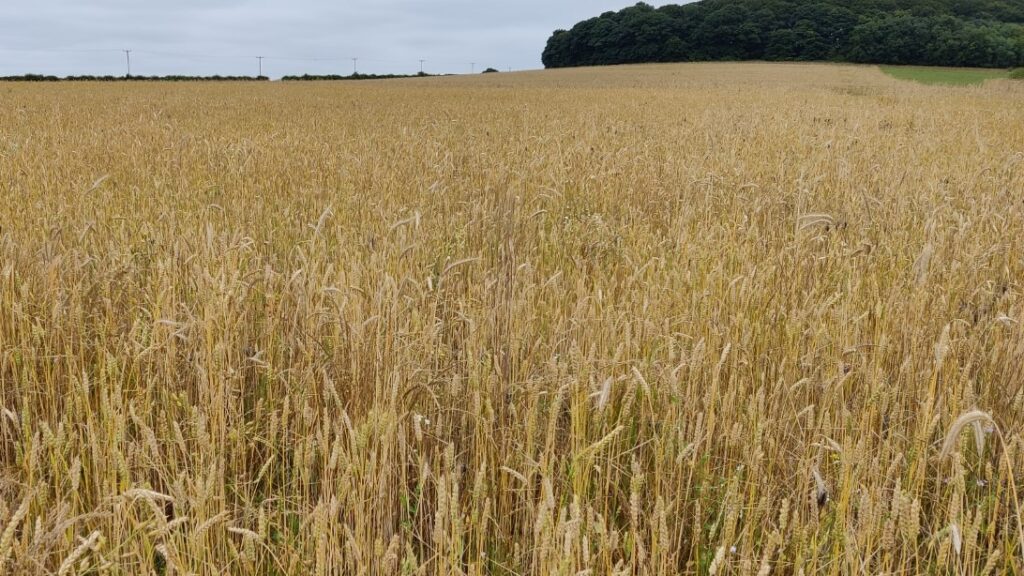
The farm has been in organic conversion since 2020 and is due to harvest its first fully organic crops in 2023. The conversion process takes two years during which our crops are described as ‘in conversion’. Our entire farmed area has gone into organic conversion, including those areas managed for wildlife, and the whole farm will be organic from December 2022. We sold or safely disposed of all of the chemicals we used to use on the farm, and now use our old spray store as a seed store.
Organic farming means farming without the use of artificial pesticides, fertilizers or other crop protection products. Seeds must also be of organic origin unless they are mixes of seeds, in which case 70% of the mix must be organic.
Our certification body, which is the organisation that we are registered with and that inspects us, is Organic Farmers and Growers. Organic farming requires us to meet stringent standards across soil health, growing, crop processing and handling.
We chose to start farming organically as it gave us a framework to focus all of our efforts on finding natural ways to improve soil health, manage pests, support biodiversity and make the farm a more beautiful and healthy place to work, stay and live. Working to organic standards, we also hope to produce food or food products that are healthy, nutritious and delicious. We’d love to make bread, beer and other things that we’d like to eat and drink – and do that in a way that leaves the soil in better health than when we started.
Regenerative practices
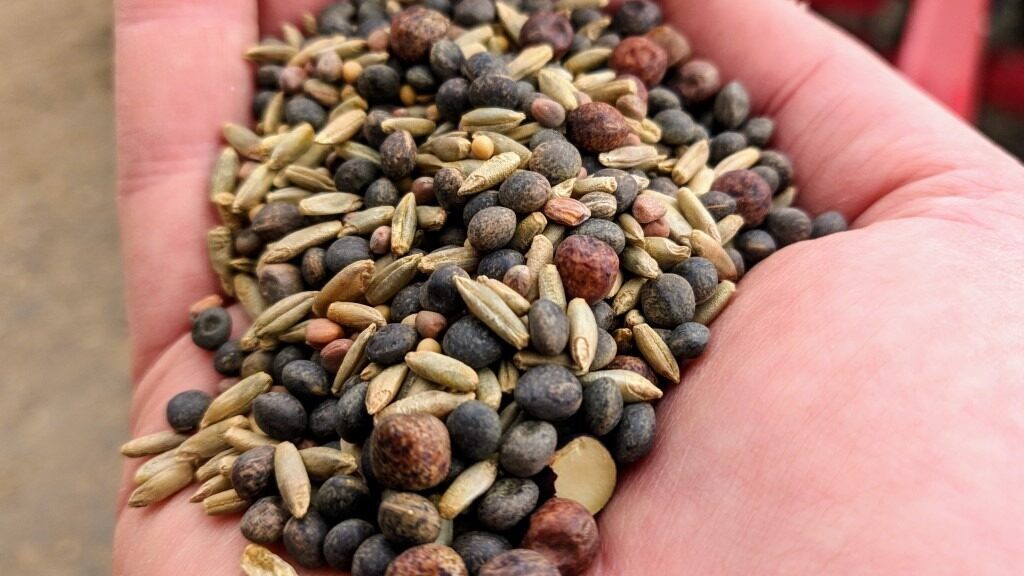
Regenerative agriculture is a conservation and rehabilitation approach to farming and food production. It focuses on the regeneration of topsoil and soil protection, and the enhancement of ecosystem services.
Regenerative agriculture doesn’t come with standards like organic farming but does include a set of farming principles and practices. We have adopted many of these practices, including
Diversity
A diverse rotation and the use of diverse multi-species leys and cover crops with complementary and symbiotic functions better supports biodiversity and soil health.
Our multi-species leys contain fifteen different species and our cover crops contain up to ten, while our flower-rich margins contain more. We currently farm in a five-year rotation and we’re interested in trying new crops and new combinations, such as mixes of more than one variety of wheat. In 2021, we grew ORC Wakelyns Population (YQ) wheat, a population wheat with thousands of genetically distinct plants.
Protecting the soil surface
We aim to shield the soil from erosion by water and wind by providing continuous green cover such as winter cover crops that also build organic matter and soil fertility.
Maintain living roots
We keep something growing in our fields for as much of the year as possible, including when we don’t have cash crops in them, as this builds soil fertility and supports soil biology.
Minimise soil disturbance
We have reduced the amount of cultivation we do and aim for shallow cultivations only sufficient to prepare the soil for seed sowing. The less we cultivate the soil, the less we disrupt beneficial soil biology such as fungal associations and earthworms. We direct drill multi-species leys and winter cover crops into the stubble of the previous crop to conserve soil moisture and minimise soil disturbance.
We do still need to plough in an organic system as this is still the best way to establish a seed bed without the use of glyphosate, but we aim to plough only as shallow as necessary, and only when we are establishing a new cash crop.
Integration of livestock
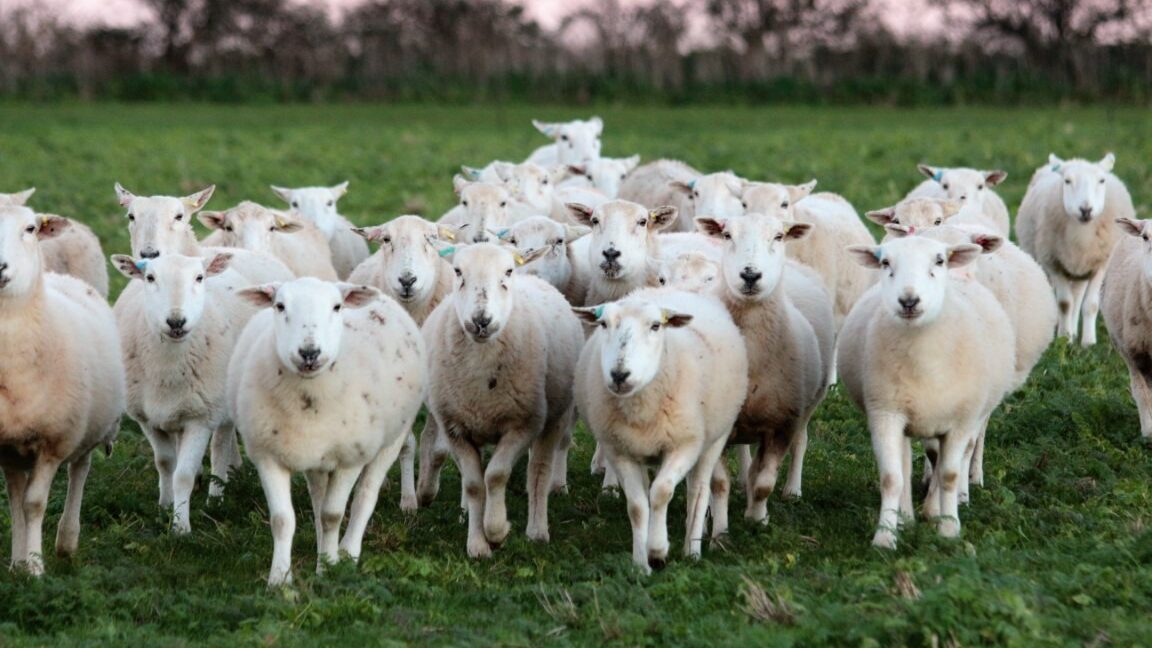
Grazing improves the function of soil biology and cycles and processes nutrients. In early 2022 we tried out grazing on the farm for the first time in about 50 years through a grazing agreement with local livestock farmers William and Sarah.
Agroecology
Regenerative and organic farming practices share many principles with agroecology, which is a holistic approach to farming and food production that brings in wider considerations around culture, social values and social justice, knowledge and the circular economy.
We’re currently focussed on the basics of trying to get our farming right and restore our soils, but we subscribe to agroecological principles and we’re working to put those into action even more fully across the farm – for example by milling our wheat locally, selling our flour locally and seeking other ways to supply food and work with even more local businesses. We already work with a wide range of local craftspeople and artists by providing pop-up shops and running festivals, and there’s much more we’d like to do, particularly on the farming side of things, in the future.
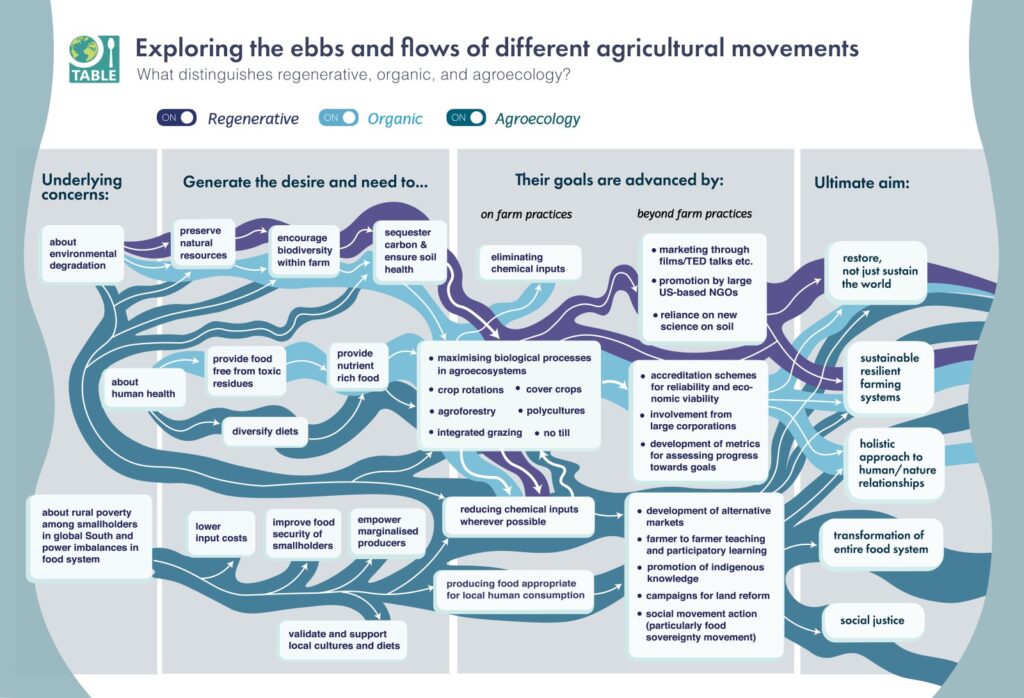
This graphic neatly summarises the similarities (and differences) between organic, regenerative and agroecological farming.
Our crop rotation
A crop rotation is a sequence of crops planted for the best balance of productivity and soil health. Our crop rotation underpins our organic and regenerative practices.
| Year 1 | Year 2 | Year 3 | Year 4 | Year 5 |
|---|---|---|---|---|
| Clover ley | Clover ley | Cereal (e.g. wheat) | Legume (e.g. beans) | Cereal (e.g. barley) |
In years 1 and 2, a clover ley builds fertility and organic matter. This may be grazed or cut and mulched, where the cut material is left on the soil to break down.
In year 3, a cereal uses some of that built-up soil fertility.
In year 4, a legume acts as a break crop, interrupting cereal sowings and minimising the risk of disease being carried from one cereal crop to the next. The legume also fixes its own nitrogen, leaving some in the soil for the following cereal crop.
In year 5, a cereal such as barley finishes the rotation and uses what’s left of the fertility in the soil. The barley can be undersown with clover which is then left in after harvest to start the rotation again at year 1.
If we are planting a spring crop, if it is year 3 we will leave the clover in over winter and for years 4 and 5 we will sow a winter cover crop after harvest of the previous crop, to ensure that we keep living roots in the soil all year round. We may also graze winter cover crops, cycling nutrients and adding further soil fertility from animal dung.
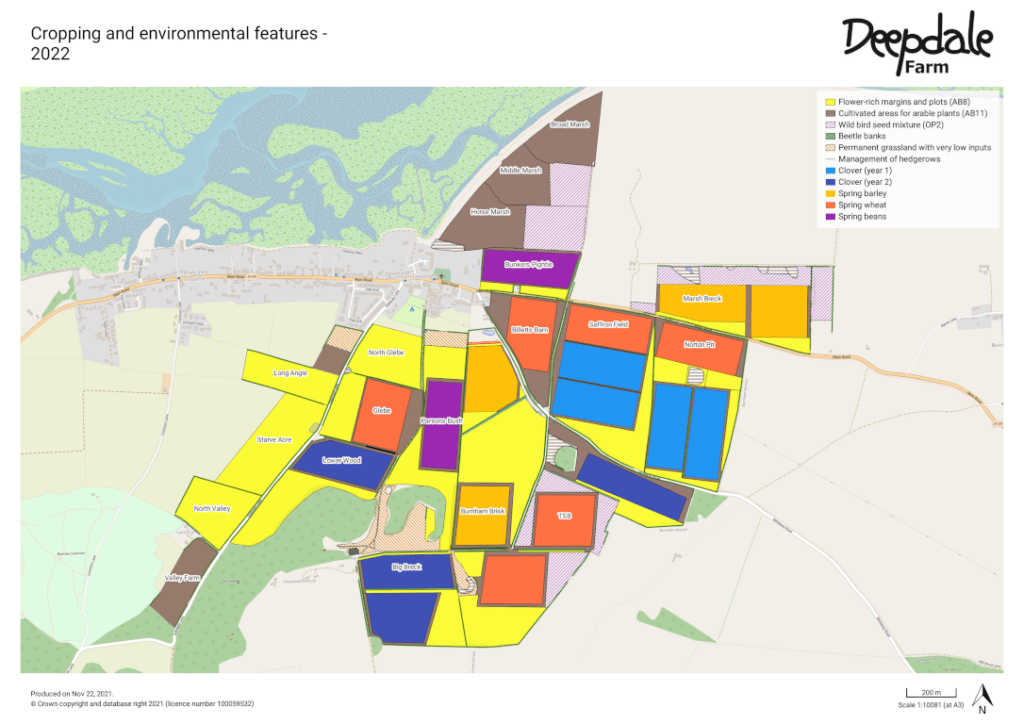
Farming for wildlife
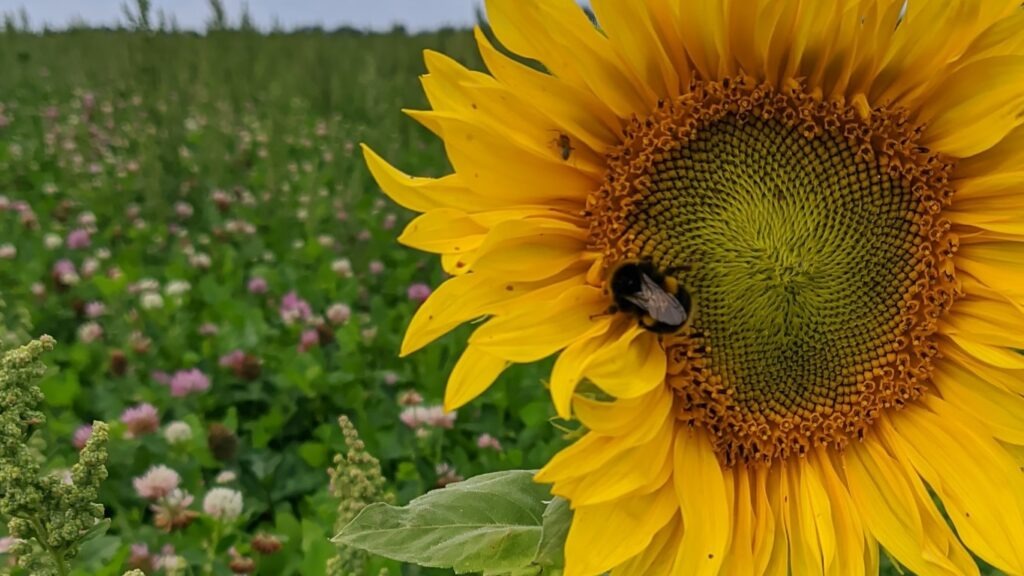
60% of our farmed area is managed for wildlife, through a mid-tier Countryside Stewardship scheme. We grow crops in 5ha plots around the farm; these are surrounded by features for wildlife.
Across the farm, we manage
- 75ha flower-rich plots – with a minimum of four species of grass and ten species of flowering plants we’re providing a source of pollen and nectar for insects, and cover for other animals. These are cut once early in the year and again after flowering has finished. The cut material is ideally removed, to keep soil nutrient levels from getting too high, which would discourage the flowers and allow the grasses to dominate.
- 45ha cultivated margins – once a year in the spring or autumn we cultivate some areas, including the margins around cropped plots, and then we leave those areas for the rest of the year. This provides a home for arable plants and the species that depend on them for food or nesting.
- 20ha wild bird seed mix – we grow a mix of flowers which we leave uncut over winter – the flowers, such as sunflowers, set seed and provide a food source for a range of farmland birds at the start of winter.
- 2km beetle banks – ploughed banks in fields divide cropped plots and are sown with tussocky grasses, wild carrot and fennel, to provide habitat for beneficial predatory beetles and other invertebrates, as well as cover for farmland birds.
Managing these habitats serves several functions
- They support a wide range of farmland wildlife from pollinators and other invertebrates to birds and small mammals
- They provide year-round green cover, shielding soils from erosion
- They look great and make people happier
- They support populations of pollinators and predatory beetles that help pollinate our crops and reduce crop pests
Related reading
Related reading below on why we have adopted these farming practices and some of what we have learnt:
- Farming is changing – here’s how we’re preparing
- Fixing our soils
- What we’re learning about cover crops
Get involved
We’re running an expanding programme of events at Deepdale Farm to let you get involved in what we’re doing.
Get in touch if you’d like to chat about other ways to work with us.
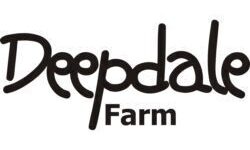
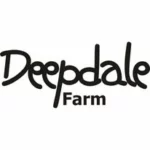

You must be logged in to post a comment.